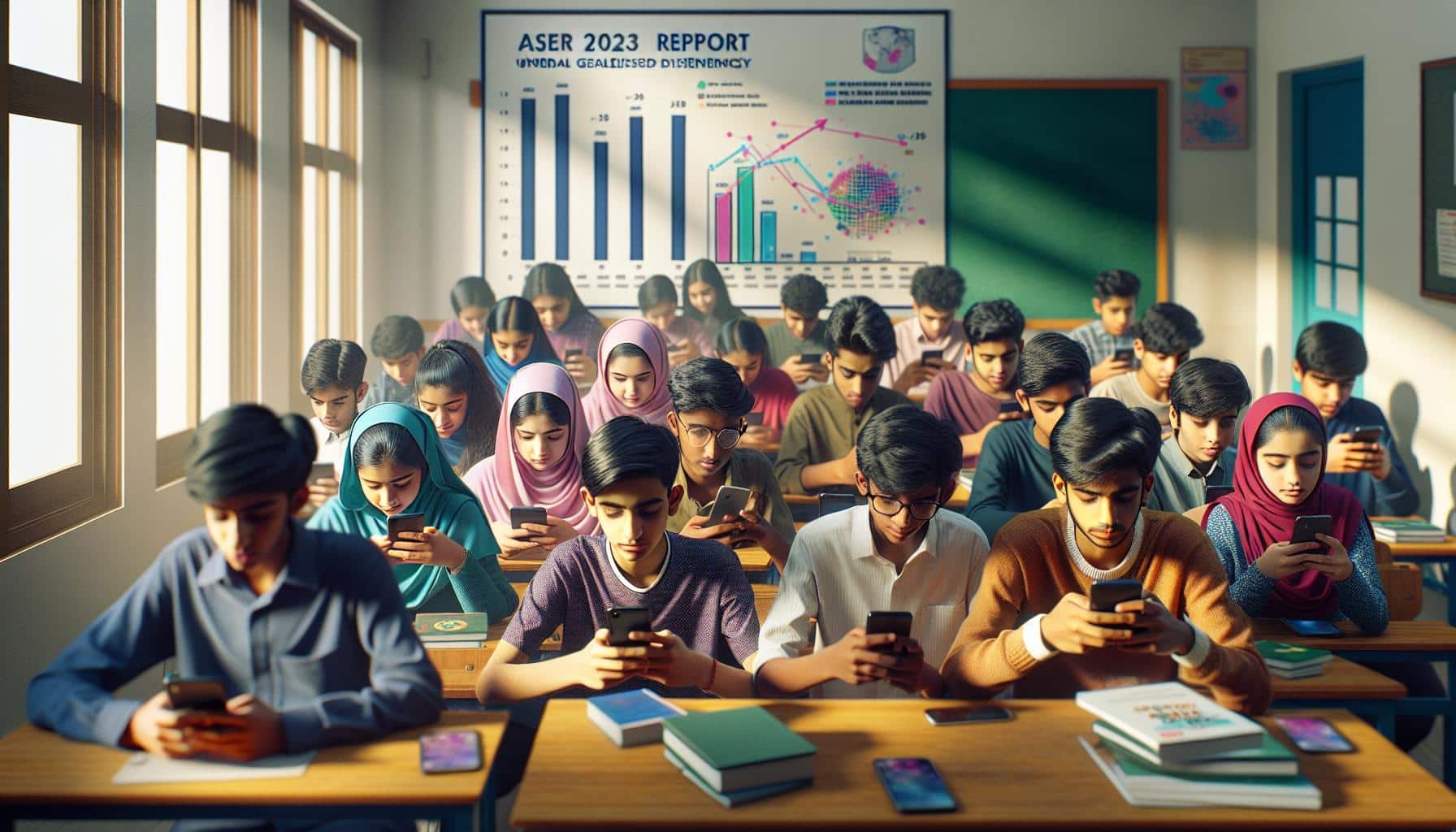Access to Smartphones Continues to Rise Among Indian Youth
Data from the Annual Status of Education Report (ASER) 2023 report shows that there is a growing access to smartphones among Indian youth. The report confirms that 92% of surveyed 14-18 year olds know how to use a smartphone. This raises questions about the implications of this widespread access to smartphones in terms of education and learning.
The Gender Gap in Smartphone Ownership
While the survey reveals that over 90% of both boys and girls know how to use a smartphone, it also highlights a significant gender disparity in smartphone ownership. Whereas 44% of boys surveyed owned their own smartphone, only 20% of girls had one. This difference in ownership can have an impact on the ways in which these devices are utilized and the skills that are developed.
Understanding the Impact of Ownership on Smartphone Skills
The survey findings indicate that ownership of a smartphone plays a crucial role in determining the depth of access to information and services. While basic tasks such as browsing for information may be accessible to both boys and girls with or without ownership, more advanced skills such as finding and sharing videos are dependent on ownership. This suggests that owning a smart device is necessary for deeper engagement with technology.
The Motivation to Learn and Use New Technology
The ASER 2023 report suggests that motivation combined with the opportunity to learn is essential in developing smartphone skills. Entertainment platforms such as WhatsApp and YouTube have greatly motivated young people to learn how to use smartphones without any gender bias. However, the report also highlights that certain online services and commercial activities see less participation from girls, which may be attributed to social barriers rather than technological ones.
Learning Without Being Taught: The Case of Pratham’s Experiment
An earlier Pratham experiment in 2017 demonstrated how children can pick up skills without formal teaching. In this experiment, children were given tablets to share and were allowed to explore and learn on their own. The experiment showed that children quickly acquired skills with the technology, motivated by the opportunity to play and experiment. The ownership and access to devices allowed both boys and girls to become comfortable with technology.
The Need for Equal Access to Devices
The ASER 2023 report emphasizes the importance of equal and unfettered access to smartphones and tablets for both boys and girls. When access to devices is constrained, the learning and abilities of girls may be negatively affected. Constraints in device usage, often due to absence of ownership, can lead to lower ability in performing tasks such as accessing services, making payments, or staying safe online. The report suggests that providing free smartphones with internet access could potentially bridge this gap and enhance learning opportunities for all.
Please note that this text has been edited in Bloomberg style.
Analyst comment
Positive news: Access to smartphones continues to rise among Indian youth, with 92% of surveyed 14-18 year olds knowing how to use a smartphone. However, there is a significant gender gap in smartphone ownership, with only 20% of girls owning a smartphone compared to 44% of boys. Ownership plays a crucial role in determining the depth of access to information and services. Motivation and the opportunity to learn are important in developing smartphone skills, and entertainment platforms have greatly motivated young people to learn how to use smartphones. Pratham’s experiment showed that children can pick up skills without formal teaching when given ownership and access to devices. The ASER 2023 report emphasizes the need for equal access to smartphones and tablets for both boys and girls, as constraints in device usage can negatively affect learning and abilities. Providing free smartphones with internet access could potentially bridge this gap and enhance learning opportunities for all. Market prediction: The increasing access to smartphones among Indian youth presents opportunities for growth in the technology and education sectors. Companies that provide smartphones and related services may see increased demand, while initiatives to provide free smartphones with internet access could lead to new market opportunities.













